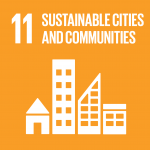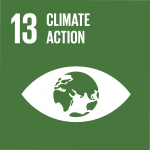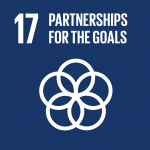The matrix of two worlds working for better community resilience
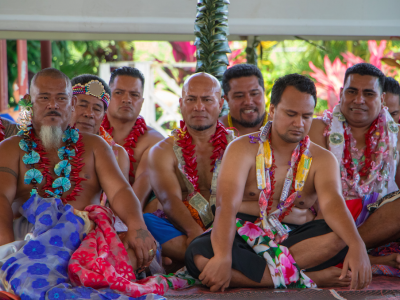
What happened when we connected two sets of communities – those working on climate adaptation plans at the national level – government, academia and research, to talk with those supporting community adaptation on the ground?
The topic - how we can build a pathway to long-term resilience at the local and community level brought up insights that we should all be concerned about. The questions posed were ‘How much progress have we made over the years on building local resilience and has the pace of adaptation kept up with the pace of climate impacts?’ and ‘How can Nationally Determined Contributions (NDCs) and National Adaptation Plans (NAPs) be used to empower the communities that need to benefit from these the most?’ We heard seven key takeaways elevated from the virtual dialogue.
This was the first discussion on the work-stream on local and community resilience towards the 7th Asia-Pacific Adaptation Network Forum. UNDP has partnered with UNEP, ICIMOD, ADB, IGES, ICCAAD, and the Ministry of Environment of Japan to lead this work stream to contribute to the 7th Asia-Pacific Climate Change Adaptation Forum (APAN) in March 2021.
Seven key take-aways:
1. The climate policy world needs to recognize and embrace indigenous knowledge
Ms. Chandra Tripura, a human rights activist and social entrepreneur from the Tripura Indigenous Peoples’ of Chittagong Hill Tracts in Bangladesh highlighted the hard truth that ‘development’ provided by the international community, is sometimes not always adaptable to local communities. Indigenous communities have had long-standing practices that worship, nurture and make Mother Nature a priority. Even under the pressures of a changing climate, these communities have already started to adapt in their own way. Ms. Tripura urged the international community to harmonize its adaptation support so it understands and aligns with indigenous knowledge.
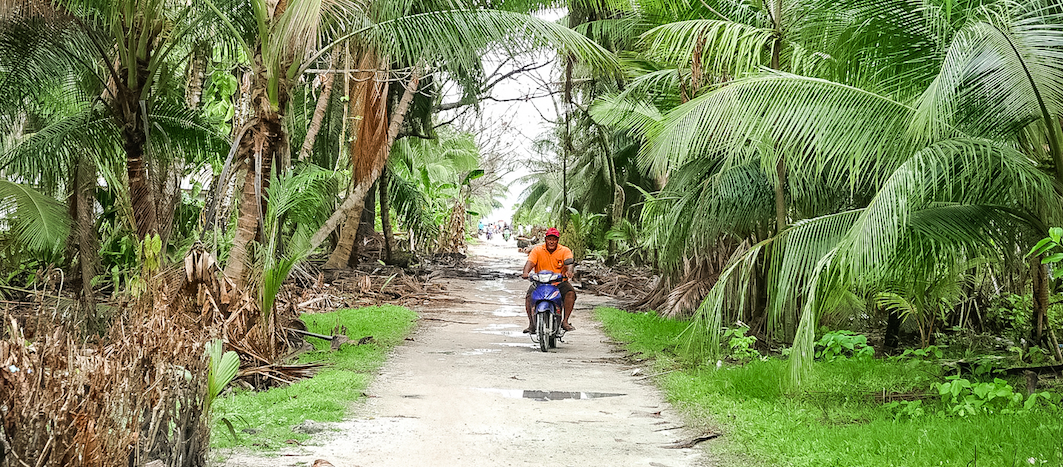
Tuvalu, Nui Island, post Cyclone Pam - Photo credit: Silke von Brockhausen/UNDP
2. We have made major progress over the past decade and better understand local conditions today than ever before
Ten years ago, detailed adaptation relevant information – how much climate finance is allocated and from/to which countries, comparisons of the private and public investments, how the money is divided into different sectors for resilience building, etc. – never existed. We also know a lot more now about climate hazards and sources of vulnerability compared to what we knew 20 years ago. Mr. Yusuke Taishi, a Regional Technical Advisor on climate change adaptation at UNDP recalled when UNDP flew an airplane over Tuvalu’s nine islands, using LIDAR, an airplane-mounted technology that collects precise information on land surface height and sea floor depth as part of a project financed by the Green Climate Fund (GCF). The survey plane captured aerial photographs of unprecedented accuracy, and when combined with the LIDAR data, it provided a very powerful 3D tool used for hazard management. This activity played a critical role in designing coastal infrastructure that protects a high concentration of houses, schools and hospitals, and ultimately impacted 29% of the country’s 10,000+ population.
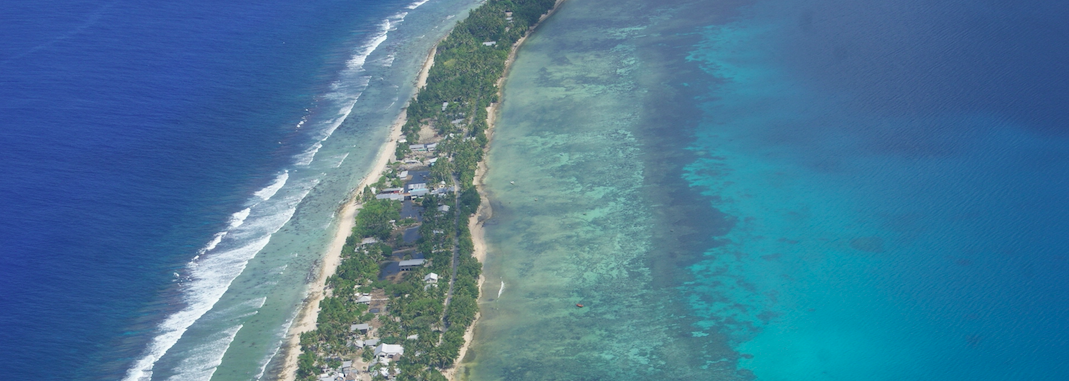
Aerial shot of Tuvalu. Photo credit: UNDP Pacific Office in Fiji
3. We are barely meeting the required financing to build resilience
Global challenges are intensifying as we face flooding, rising sea levels, warming oceans, record-breaking hurricane seasons; all of this causes great damage to economies. The financial damage caused by a single hurricane could wipe out an entire Small Island Developing State’s GDP. Based on the increasing trend of economic damages caused by hydrometeorological disasters over the past 20 years, the adaptation finance required per year to build resilience amounts to US$ 180 billion. The amount of adaptation financing available hovers around the US$ 47-48 billion per year, which means we are barely meeting the 20% of financing required for building resilience.
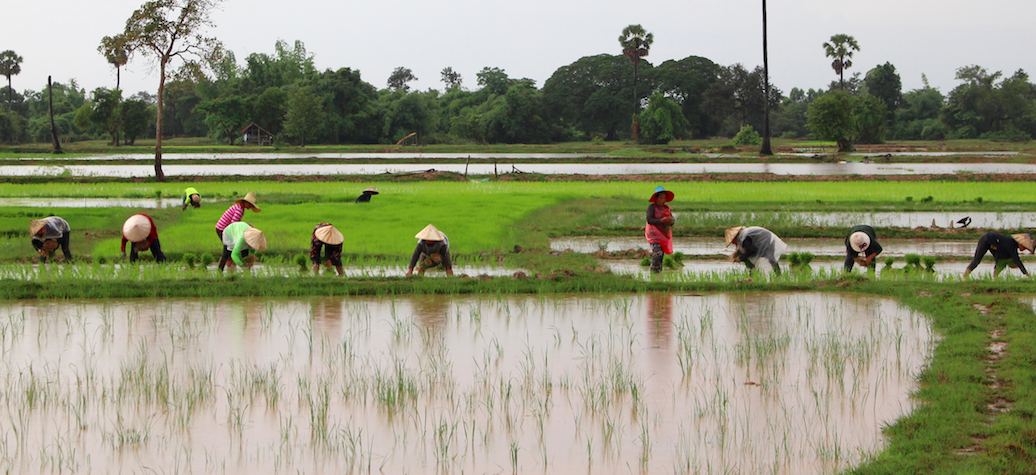
Rice field workers in Lao PDR. Photo credit: UNDP/Lao PDR Office
For comparison purposes, in Thailand and Indonesia, the financing available for COVID stimulus packages amounts to US$ 49 billion in Thailand and US$ 48 billion in Indonesia. An additional comparison shows the total government expenditures for all South East Asia countries amounts to US$ 508 billion per year, which is the cost of running a government. Many of their expenditures are relevant for building resilience at the community level but they are not necessarily captured as adaptation finance.
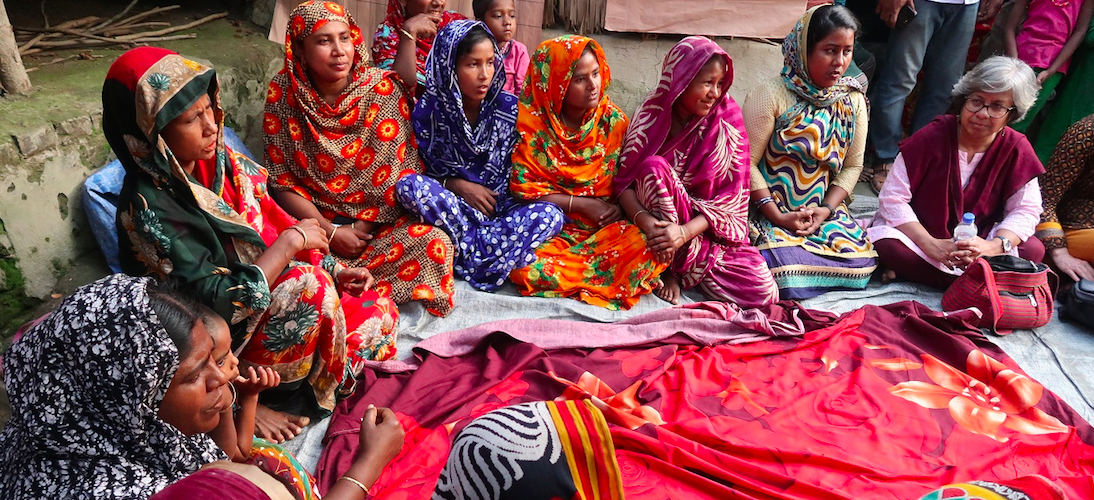
UNDP-supported project 'Local Government Initiative on Climate change (LoGIC)' frequently visits key stakeholders to consult on the progress of the project in Bangladesh. Photo credit: UNDP Bangladesh
4. We need to flip the top-down approach and look at beneficiaries as partners
The poor communities aren’t just the most vulnerable and recipients of aid, they are the change agents and the international community needs to better engage with them in the decision-making processes, said Professor Saleemul Huq, the Director of the International Centre for Climate Change and Development (ICCCAD). He urged for a bottom-up process and stressed governments must invest money closest to the action (and in young people). There needs to be a mechanism for how governments listen to the people of local communities and the way we have been communicating needs to flip direction. Policy-makers need to go to the people, and not the other way around.
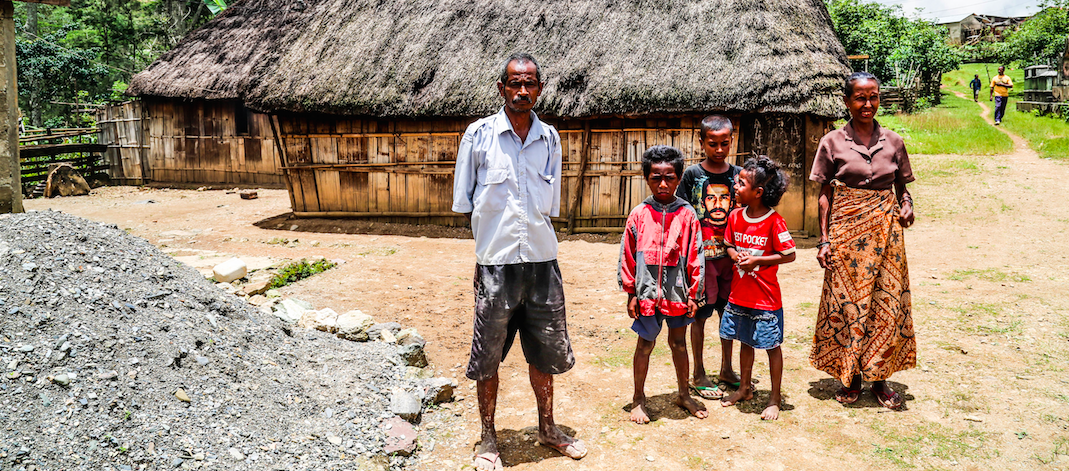
Rural family outside their home in Timor-Leste. Photo credit: UNDP/Jin Ni
In Timor-Leste, the government conducted a vulnerability assessment, which involved on-the-ground field visits, a questionnaire and discussions with the locals and farmers from each village. On these visits, there was evidence of mass-crop failure due to prolonged droughts and reported harvests becoming increasingly unpredictable for farmers. This vulnerability assessment later fed into the formulation of the country’s National Adaptation Plan, said Ms. Justina Aurea da Costa Belo from the National Directorate of Climate Change, under the Secretary of State for the Environment in Timor-Leste. This is a prime example of a bottom-up approach in the NAP process that countries can consider when they are preparing for these processes.

Community-based flood and glacial lake outburst risk reduction in Nepal. Photo credit: UNDP/2016
5. Governments should look into institutionalizing localized climate information as a regular service
Local communities are better positioned to know what to adapt to, if they have the information available to them, said Ms. Alicia G. Ilaga the Director at the Climate Resilience Agriculture Office in the Philippines. This can be achieved through the creation of permanent regional offices that coordinate adaptation activities and this can ensure continuity of programmes that integrate services that are needed at the community level over a longer period of time.
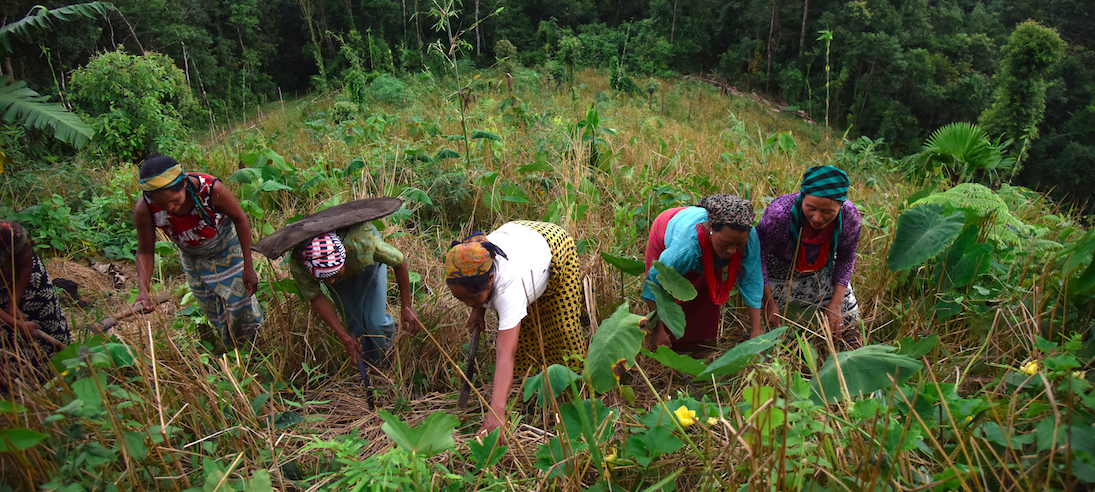
A group of five Naga women engaged in cultivation on a slope terrain. Photo credit: UNDP/India
6. To mainstream our processes in a holistic manner requires partnership
The actions in our overall approach to mainstreaming processes should be holistic and targeted in order to build long-term transformation in resilience, said Mr. Osamu Mizuno, a Principal Fellow at the Institute for Global Environmental Strategies (IGES). In the international development sector, it’s never been the domain of a single institution that causes change on the ground, but rather many like-minded and mandated organizations and programmes that implement this work together. Through stronger partnerships, we can generate more projects on the ground, exchange experts and create training modules and joint-exercises that help mobilize action at the local level.

In Papua New Guinea, this project seeks to strengthen communities’ abilities to make informed decisions about and adapt to climate change-driven hazards that affect both coastal and riverine. Photo credit: UNDP
7. ‘Pracademics’ and academics need to work together: strengthen the link between universities and governments
In order to strengthen the link between universities and governments, we need to engage students and youth in this model, said Dr. Jon Padgham, the Executive Director of Risk, Vulnerability, and Adaptation Program, START. Understanding resilience is a long process. It’s non linear and requires building trust with communities and we need to challenge some of the academic culture and donor culture, which can sometimes work against long-term engagement. Engaging students and youth – our future – can bring hands-on skills to create experimental learning for long-term engagement with communities.
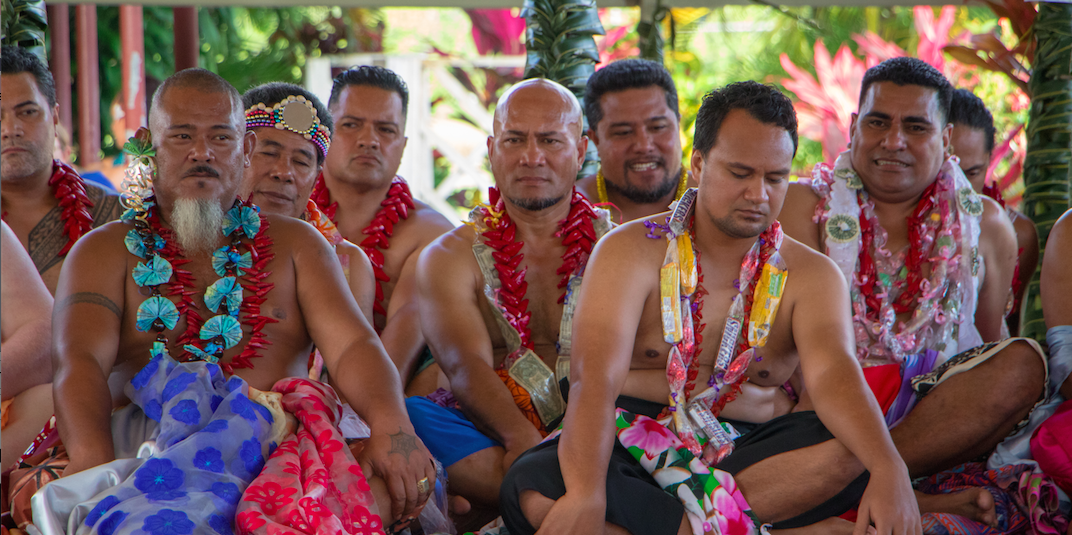
UNDP-supported project 'Enhancing Resilience to Climate Change' in Samoa is funded by the Adaptation Fund. Photo credit: Alvaro Hoyos/Samoa CARES
What is UNDP’s commitment to locally led action?
With the COVID-19 crisis still unfolding and impacting communities and economies, the conversation to ‘build back greener’ must provide the space for local communities to lead the response. UNDP has included support to socio-economic assessments and what we call the COVID 2.0 offer – focusing on green economy, digital transformation and innovation; governance and social protection. Partnerships are key to this.
Under UNDPs Climate Promise in Asia and the Pacific, 27 countries are being supported. The five service offers are i) to build political will and societal ownership at the national and sub-national levels; ii) review, align and update existing targets; iii) incorporate new sectors and/or greenhouse gases; iv) access costs and investment opportunities; v) monitor progress and strengthen transparency are all at the heart of the Climate Promise. The discussion at APAN contributes to identifying ways and means to further embed partnerships for local resilience into the NDC enhancement process.

This photo relates to the project 'Reducing the Vulnerability of Cambodian Rural Livelihoods through Enhanced Sub-National Climate Change Planning and Execution of Priority Actions. Photo credit: UNDP
What is also important for UNDP is how to support governments to synergize the NAPs and NDCs to local efforts during the implementation phase. For the international community as a whole, a sustained investment is required to provide opportunities for empowerment of local communities to lead adaptation efforts and to ensure tangible benefits of adaptation options in the form of jobs and livelihoods that contribute to a greener and more resilient recovery.
Making climate finance access less onerous for local actors is crucial. Adaptation is indeed front and center for raising ambition on climate action within the NDCs and there is a strong alignment with National Adaptation Plans. The role of the most vulnerable communities is that they are the change agents needed for locally led adaptation efforts, so the NDCs and NAPs must recognize, include and empower them in planning and implementation.
***
The panelists of this virtual dialogue on Resilience of People and Communities – How Far Have We Come? How Should We Build the Road Ahead included:
- Ms. Chandra Tripura, Founder, Hill Resource Centre, Bangladesh
- Mr. Yusuke Taishi, Regional Technical Advisor on climate change adaptation in the Nature, Climate and Energy team of UNDP
- Prof. Saleemul Huq, Director, International Centre for Climate Change and Development (ICCCAD)
- Ms. Alicia G. Ilaga, Director, Climate Resilience Agriculture Office, The Philippines
- Ms. Justina Aurea da Costa Belo, Professional Staff at the National Directorate of Climate Change, under the Secretary of State for the Environment, Timor-Leste
- Mr. Osamu Mizuno, Principal Fellow, Institute for Global Environmental Strategies (IGES)
- Dr. Jon Padgham, Executive Director, Risk, Vulnerability, and Adaptation Program
Ms. Rohini Kohli, Lead technical specialist of National Adaptation Planning at UNDP, and Mr. Krib Sitathani, the Asia-Pacific Climate Promise Coordinator at UNDP, moderated the panel.
Story by Melanie Pisano, Climate Adaptation Communications Specialist, UNDP
